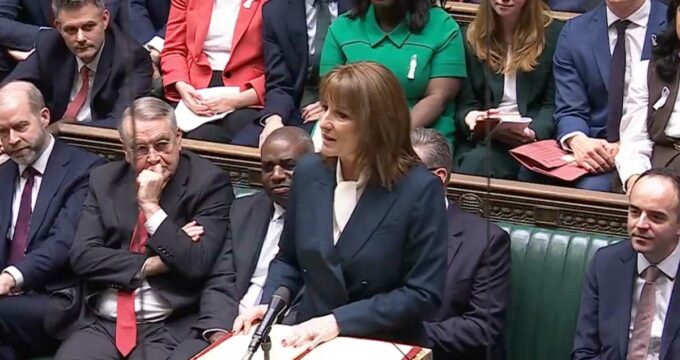Korea aims for 200,000 foreign students by 2023
The South Korean government has announced a new national strategy to nearly triple the country’s foreign student enrolment by 2023. Just under 85,000 foreign students studied in Korea in 2014; the government would see this number increase to 200,000 by 2023.
This target also aims to reverse a trend of declining foreign enrolment from a record-high of 89,537 students in 2011 to 84,891 last year. It also effectively resets a previous government target to build international enrolment to the 200,000-student level by 2020 - an initiative that was showing little sign of success to this point.
These recent-year declines follow a period of dramatic growth in foreign student numbers at Korean universities. As the following chart reflects, the 2011 peak was the high-water mark in a solid decade of growth from 2001 on, and especially so between 2001 and 2007. The increasing numbers during this time were largely the result of national, coordinated attempts to build the country’s foreign student base, including 2005’s Study Korea Project and, in 2009, the more quality-focused "Plan to Improve Support and Supervision for International Students."

- New regulations to permit Korean universities to open departments and programmes exclusively for foreign students;
- An expansion of English-taught programmes, particularly in STEM subjects (science, technology, engineering, and math);
- Increased employment supports for foreign students who wish to stay in Korea to work after graduation;
- Funding of 18.8 billion won (US$16 million) in 2015 to support the marketing and recruitment efforts of Korean universities;
- Funding for a six-week scholarship programme that will bring 100 students from other Asian countries to study in Korea, mostly in institutions outside of Seoul.
Among other things, these recent announcements set the stage for a further expansion of English-language instruction in Korean higher education. While the increasing adoption of English on university campuses is not without controversy, South Korea is already a leader within Asia in this respect. It is estimated that up to a third of all university courses are taught in English. Further, a small number of Korean institutions offer instruction entirely in English. University World News has noted an apparent correlation between English-taught programmes and those institutions with prominent STEM programmes, international profile or ranking, more sophisticated support services for international students, and more substantial English requirements for graduation.
The job problem
Limited employment opportunities for foreign graduates, particularly in a competitive job market where Korean graduates are often underemployed or unemployed, is seen as one of the main causes of the declining foreign enrolment since 2011.
As a result, the government is taking further steps this month to try and expand work opportunities for foreign students.
The Korean trade ministry will now play a more active role in connecting foreign graduates with prospective Korean employers. The government has also eased visa restrictions for foreign graduates, who can now more easily receive a preferred E-7 visa regardless of their field of study. "Getting more foreign talent has become more important," the ministry said in a statement to The Korea Times. "We will continue to work hard to improve and promote the excellence of Korea's higher education." At present, international students account for about 2% of total higher education enrolment in Korea. This compares to 18-19% in the UK or Australia and to an OECD average of 8%. If the government’s 2023 targets are realised, the proportion of foreign students in Korean higher education should rise to around 5% by 2023.
The big why
Korea’s motivation for further increasing its international student base is grounded in two related factors. First, the population of college-age students in the country is declining due to prevailing demographic trends and, in particular, a declining birth rate. While demand for higher education in Korea has long outpaced the available supply of university seats, that dynamic began to reverse itself in 2012. At some point during that year, the domestic prospect pool for Korean universities peaked and began to shrink. Ministry of Education projections indicate that the country will have a surplus of university seats for the first time in 2018 and that the number of excess spaces could reach 160,000 by 2023. In response, the government is taking steps to shrink or otherwise restructure the system by closing some institutions and merging others. But an additional 115,000 international students, as the 2023 targets anticipate, would certainly go a long way to closing that gap as well. A soft economy at home is another important driver of the 200,000-student target. With an economy heavily dependent on exports (50.6% of GDP between 2010 and 2014), Korea was hit hard by the 2008 global economic crisis, and by subsequent market slowdowns in the US, China, and the Eurozone. Increased foreign student enrolment, therefore, represents an additional source of export revenue as well as a basis for building stronger trade ties with important regional markets. Foreign graduates have an important role to play in this process, Kim Hong-ju, director of the human development division at the Ministry of Trade, Industry and Energy, said in a recent interview with The Korea Times: "Most foreign students Korean companies are eyeing are from emerging markets such as Russia, India and China," said Mr Kim. "Those are growth markets for Korean businesses. As companies often have difficulty in advancing into those markets due to the language barrier and culture gap, foreign students born and raised there will be a great help." At the same time, the growing importance of key markets within Asia, notably China and India, is also encouraging more Korean students to choose destinations closer to home for their studies abroad. For additional background on emerging market patterns and key bilateral student flows within the region, please see our recent post, "Is Asia ready to be the next higher education superpower?"
Most Recent
-
ICEF Podcast: Engine of growth: The true value and impact of the international education sector Read More
-
Global higher education enrolments expected to grow through 2035, but new challenges must be addressed Read More
-
Canada: A case study of immigration policy impacts on postsecondary institutions and the wider economy Read More
















